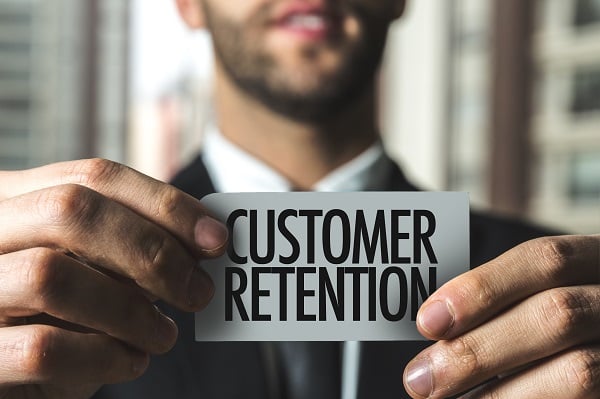In this final blog post in my webinar marketing series, I'm going to talk about how to get the most out of your hard-earned webinar registrations list.
In part one and part two I discussed how to plan your webinar programme and then how to promote it.
In this part I cover why you need to follow up after your webinar and the 8 Key Post Webinar Follow Up Actions.
The 8 Key Post Webinar Follow Up Actions
I'm going to be a bit controversial here. Bear with me.
Your main objective when promoting a webinar is to get registrations.
Get as many prospects from your target audience as possible to make an emotional commitment for more information about how you can help fix their pain points.
Notice I didn't say 'about your products and services'?
Buyers want solutions and a promised land of no pain (metaphorically speaking) - they aren't interested in features. They want benefits.
Job #2 is to get them to attend your webinar.
Job #3 is to execute the best follow-up programme possible whether they attended or not.
If you are like me, quite often I come across a webinar that sounds great. But I'm busy with a meeting. So, I register to attend, safe in the knowledge (fingers crossed) that I will get a link to the catch-up video which I can watch when the time is right for me.
Guess what - your audience is just the same.
So, make sure that you keep that communication flow going - after all, you now know they are a marketing qualified prospect (MQL).
Job #4 is to turn the MQL into a sales qualified prospect (SQL).
The 8 Key Post-Webinar Follow-Up Actions
- Send Thank You Emails
- To Attendees: Send a personalised thank-you email with a link to the webinar recording. Include any additional resources mentioned during the webinar (e.g., slides, articles, case studies).
- To Non-Attendees: Send a separate email thanking them for registering and offering a link to watch the recording on demand. Include any interesting questions that were asked by the audience in your email, but not the answers!
- Share Webinar Recording
- Post the webinar recording on your website. Update the webinar landing page by changing the registration form to an "access recording" form.
- Promote the on-demand recording across social media and email.
- If you have a YouTube channel - upload the video and add a link back to your blog section of the website and the events section so viewers can register for future webinars etc
- Create a Webinar Summary Blog Post
- Write a blog post summarising the key takeaways, linking back to the webinar recording, and offering a call-to-action for more engagement.
- Write a blog post summarising the key takeaways, linking back to the webinar recording, and offering a call-to-action for more engagement.
- Segment Leads and Add to Workflows
- Segment attendees and non-attendees into appropriate email workflows or lead nurturing campaigns based on their level of engagement.
- Update your lead scoring / tracking.
- Personalise future content for those who showed higher interest during the webinar (e.g., asked questions, stayed throughout).#
- Follow-Up with Sales Team
- Share the list of attendees with your sales team, prioritising those who showed active interest (e.g., asked questions, engaged with polls).
- Equip the sales team with talking points or insights from the webinar to continue the conversation with prospects.
- Make sure that the sales team follow up in a timely manner – and keep following up. According to Call Hippo - over 35% of the leads are never followed up on! https://callhippo.com/blog/marketing/best-day-time-make-business-call
- Engage on Social Media
- Share key quotes, highlights, and takeaways from the webinar across your company’s social media platforms.
- Edit the webinar recording down into smaller chunks for social media. Don’t be afraid to test post these clips to different platforms.
- Encourage attendees to share their feedback or ask follow-up questions in the comments.
- Analyse Webinar Performance
- Review the performance metrics (e.g., registration numbers, attendance rate, audience engagement) to understand what worked well and identify areas for improvement.
- Monitor the performance of follow-up emails and content to refine future strategies.
- Send a Post-Webinar Survey
- Distribute a brief survey to attendees and non-attendees to gather feedback on the webinar content and delivery.
- Use the feedback to improve future webinars.
Conclusion
If you systematically execute these steps, you’ll ensure your webinar has a lasting impact and maximises engagement with your audience.




.png?width=800&height=500&name=Expert%20View%20(1).png)